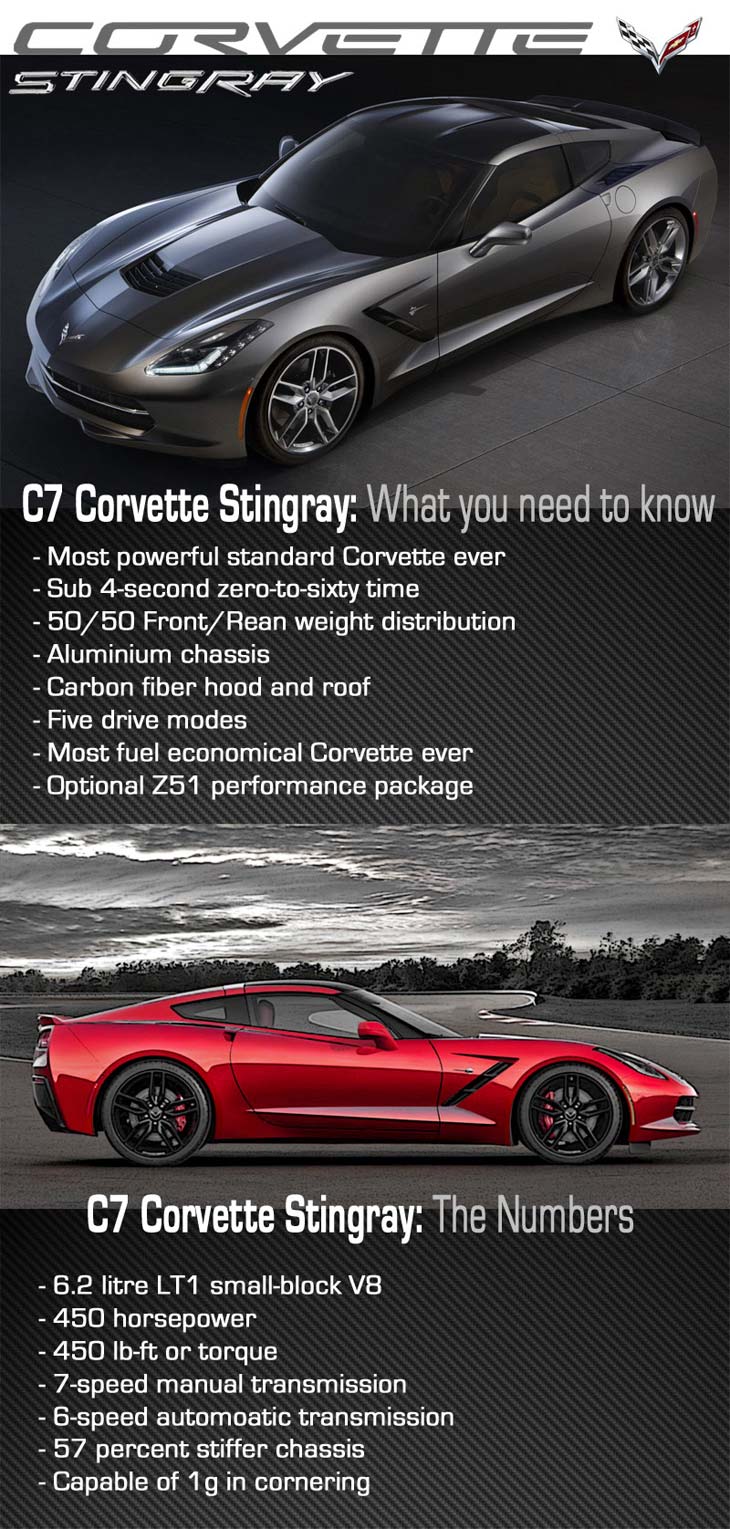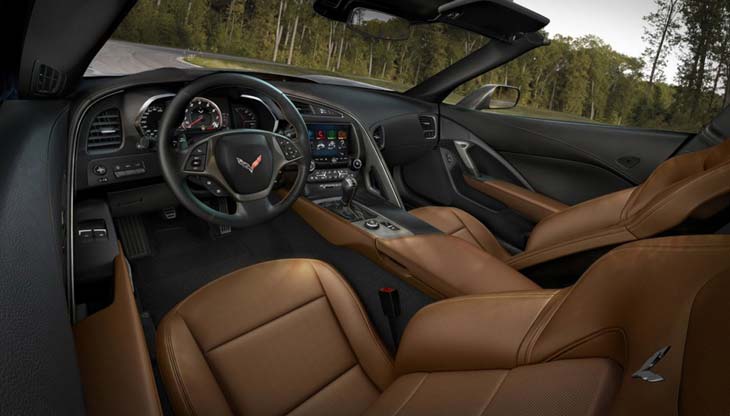Chevrolet
Corvette C7 Stingray
Unveiled at the 2013 Detroit Auto Show, the C7 generation of the
Chevrolet Corvette marks the return of the iconic Stingray name, and
it also sees the Corvette undergo its most radical overhaul since
the modern-looking C5 took over from the distinctly dated C4. To quote
Daft Punk, the C7 is harder, faster, stronger, better.
The C7 takes the usual Corvette recipe, but chucks out all the ingredients
which have been causing issues since, well almost since the car was
born. That means quality control has been dialed up significantly,
especially in the interior where the Corvette has always been criticised
against its peers, as well as significantly cheaper models. The exterior
too has been sharpened up a bit, mainly with the aim of attracting
more discerning buyers who were perhaps previously put off by the
Corvette's rather brutishly simple no-nonsense design.
The previous C6
Corvette generation had already proved itself in the performance
department, especially the ZR1
which was more than a match for some of Germany and Italy's most desirable
offerings. So it comes as no surprise that the C7 builds on that benchmark
and offers even more speed than the C6 straight out of the box.
The standard engine in the Corvette Stingray is a 6.2 litre LT1
V8 featuring direct injection, Active Fuel Management, continuously
variable valve timing and cylinder deactivation for better fuel economy.
This engine produces 450 horsepower and 450 lb-ft of torque.
It's the most powerful entry-level engine the Corvette has ever had,
and offers a zero-to-sixty time in less than four seconds.

The transmission choices include a standard 7-speed manual
unit or an optional 6-speed automatic. The manual transmission
is from Tremec, and it incorporates rev-matching for both downshifts
and upshifts. The automatic transmission is an updated version of
the unit found in the previous generation Corvette.
When designing the new Corvette, GM's engineers were careful to manage
weight and improve chassis rigidity. That means that almost the entire
chassis has been sculpted out of aluminium, like the outgoing ZR1
and Z06. The hood and roof are formed from carbon fiber, and
while the rest of the bodywork is formed from a less exotic compound
- fiberglass - it's production method renders it lighter than on previous
cars. However despite all this the C7 weighs in at roughly the same
as the C6. So where did the extra lbs come from? Well mainly from
that more luxurious leather clad interior, but also on the
more extensive array of electronic wizardry found in the engine bay.
Either way the C7's chassis is better balanced, offering a near-perfect
50/50 weight distribution, as well as a lower center of gravity and
being 57 percent more rigid than its predecessor.
As well as the standard Corvette Stingray, a higher performance Z51
package is available which offers a number of race-inspired goodies
including, a dry sump lubrication system, closer ratio gears, an electronic
limited slip differential, additional coolers for the brake, transmission
and differential, Bilstein dampers with optional Magnetic Ride
Control and Brembo brakes. Visually the Z51 Corvette will
be marked out with larger diameter wheels, brake cooling ducts, and
a different rear spoiler.

The interior of the new C7 Corvette Stingray is a real leap forward
for the car. Taking it from a cheap, plasticky rattle-fest, to a modern
leather wrapped, aluminium and carbon fiber trimmed fighter-jet inspired
cocoon. The driver-focused cockpit features a smaller 14.1-inch
(360 mm) diameter steering wheel, and three multi-configuration displays,
including a pair of eight-inch screens and color head-up display.
At the core of the Corvette Stingray's driver-focused technologies
is the cockpit-mounted Driver Mode Selector, which allows drivers
to optimize the car for their driving preference and road conditions
via five settings: Weather, Eco, Tour, Sport and Track. The Driver
Mode Selector is easy to use via a rotary knob near the shifter. The
Tour mode is the default setting for everyday driving; Weather mode
is designed primarily for added confidence while driving in rain and
snow; Eco mode is for achieving optimal fuel economy; Sport mode is
for spirited road driving and Track mode is for track use.
The Corvette Stingray delivers an advanced infotainment system,
featuring Chevrolet MyLink and high-definition radio, as well as enhanced
OnStar with 3D navigation maps. An additional USB port in the center
console, a stand-alone audio input jack and an SD card slot provide
extra connectivity.
Prices for the C7 Corvette Stingray start at $54,000.
| Year (of specifications) |
2015 |
| Engine |
6.2 litre LT1 V8 |
| Transmission |
7 speed manual or 6 speed automatic, RWD |
| Max speed |
- |
| 0-60 mph |
3.8 seconds |
| Horsepower |
450 horsepower |
| weight |
- |
|

